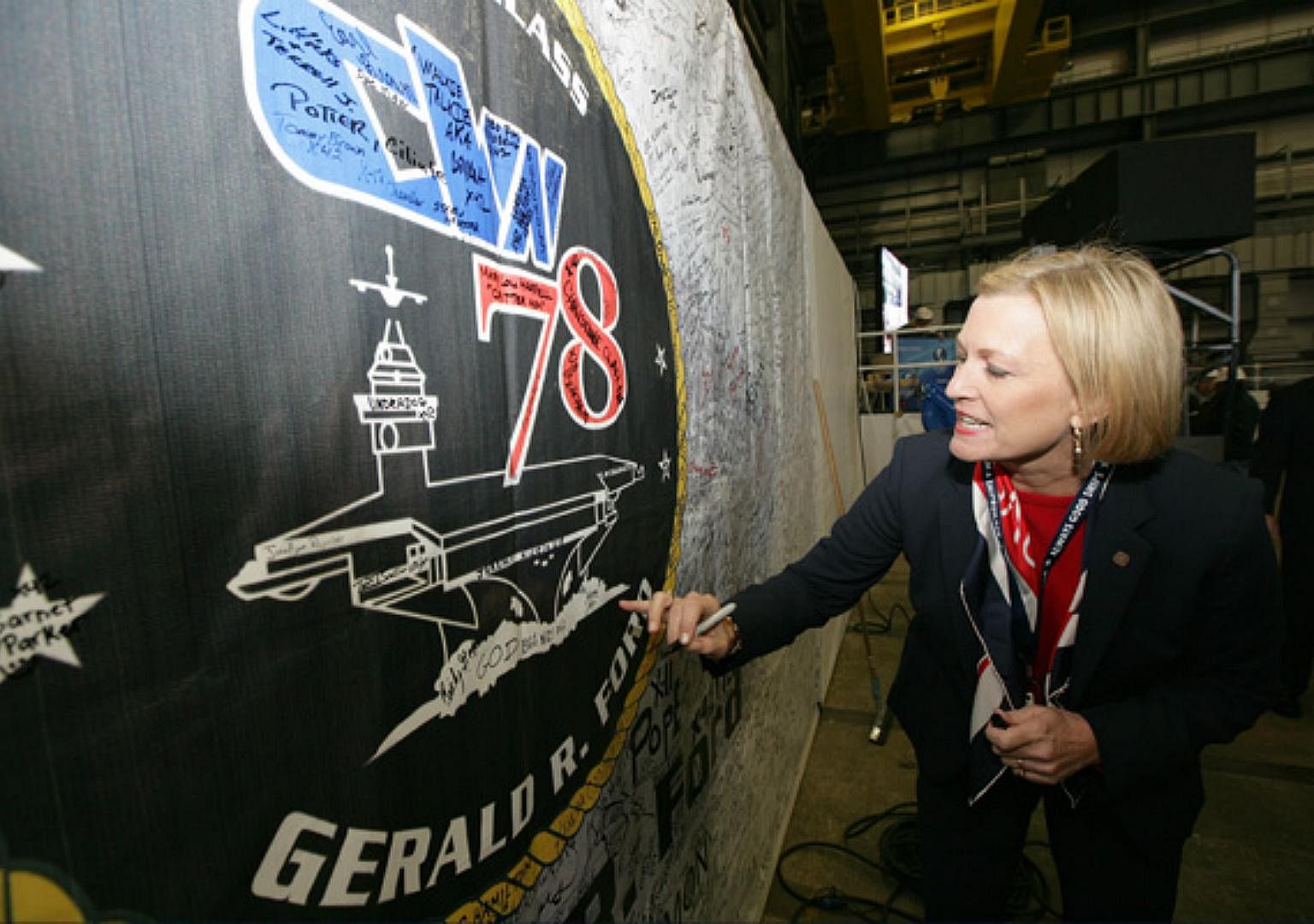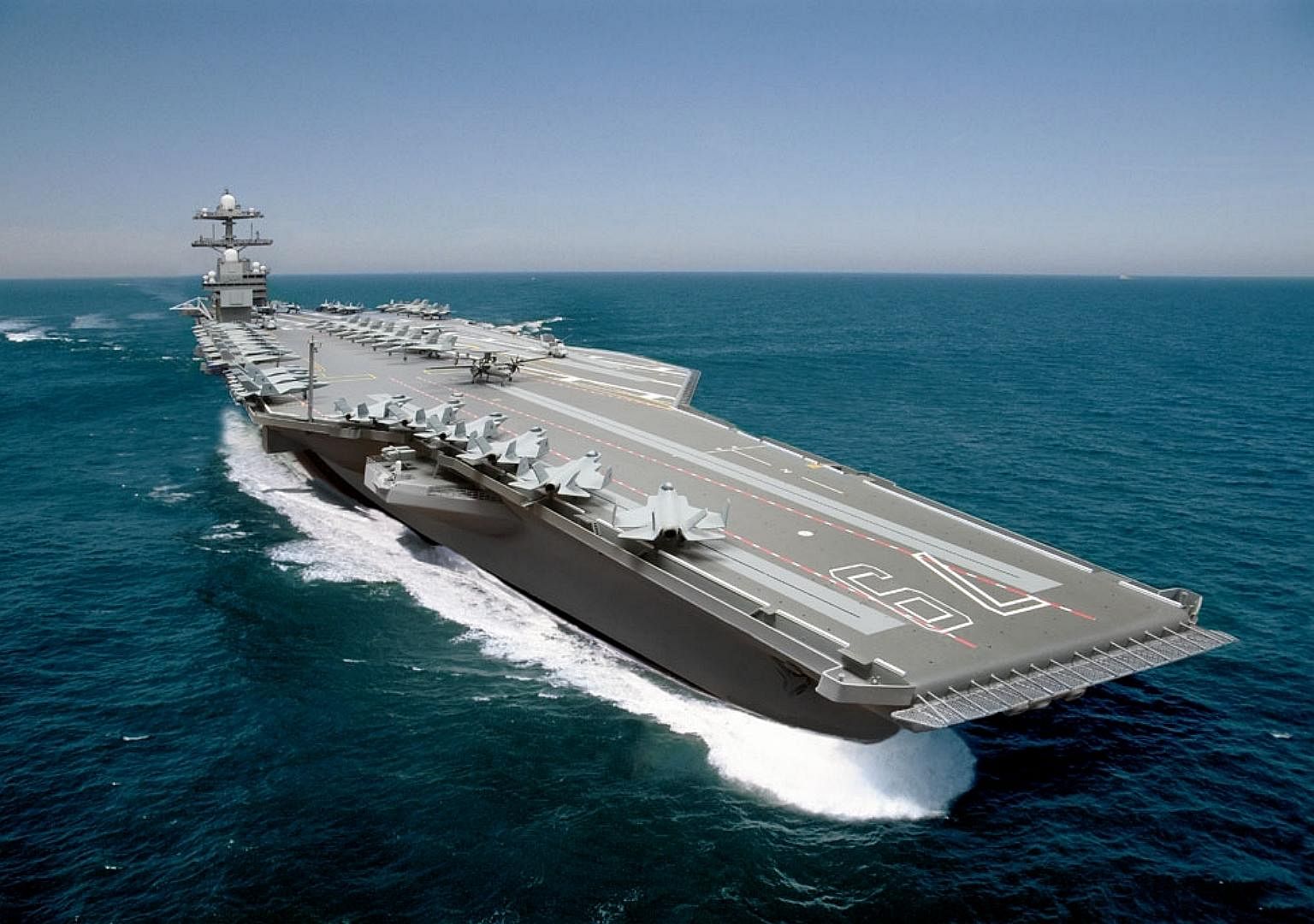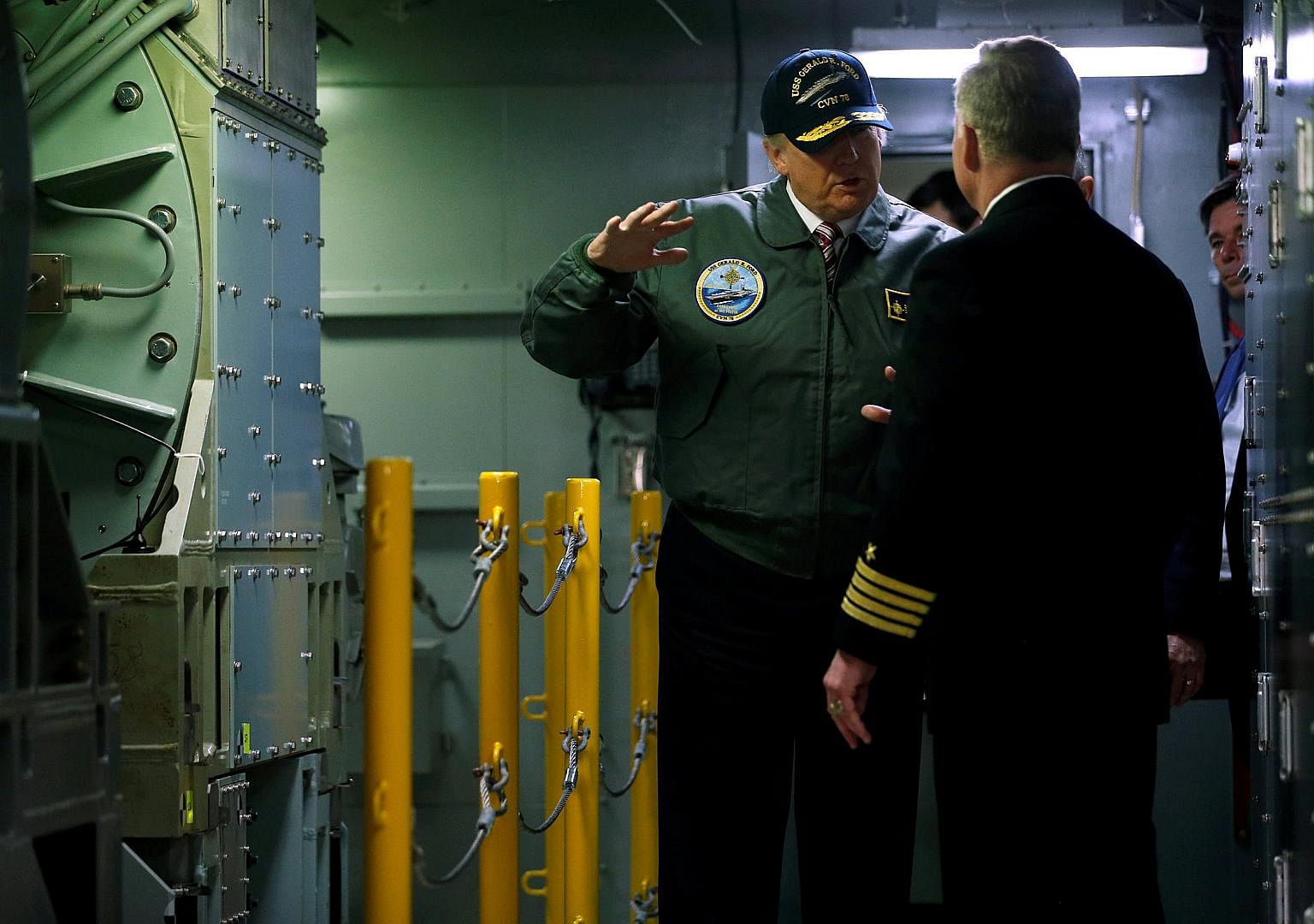USS Gerald R. Ford, the US Navy's new Ford-class aircraft carrier and its most expensive warship, has finally seen the light of day as it set sail for its first trials last Saturday (April 8).
Intended as a replacement for its existing Nimitz-class supercarriers, the Ford-class boasts superior technology but was dogged by delays and budget overruns for more than a year.
Here are some interesting facts about it.
1. First new class of aircraft carrier in over 40 years
The USS Gerald R. Ford's departure under its own power, from Huntington Ingalls Industries's Newport News Shipbuilding in Virginia, marked the first time in 42 years the Navy has stretched the sea legs of a new class of carrier.
It was on March 1, 1975 when the USS Nimitz - currently the oldest aircraft carrier in the US Navy's fleet - got underway from the very same pier for its sea trials.
2. Named after the 38th US president


The ship was christened at its launch in November 2013, after former president Gerald Ford.
Mr Ford's daughter Susan Ford Bales, the ship's sponsor, reportedly smashed a bottle of American sparkling wine across its bow to mark the christening.
3. Designed using 3-D product model at full scale

The Ford is also the Navy's first carrier to be completely designed using a 3-dimensional product model, with advanced computer tools used in the ship's planning and construction.
Every part of the ship was created in a 3D model at full scale. At any given day, hundreds of designers, engineers and planners were in the model designing, creating and planning the ship's features.
4. Took 7 years to build
Construction of the Ford started in November 2009, although the ship's conception started as early as November 2006.
While it was officially christened at the end of 2013 and due to be commissioned in 2015, the ship ran into problems with its advanced systems and overran its initial budget of US$10.5 billion (S$ 14.8 billion). Its final cost is estimated to be around US$12.9 billion.
Over 5,000 shipbuilders worked on the ship, with thousands of suppliers across the United States contributing parts to build it.
5. Weighs about 100,000 tonnes when fully loaded

The 333m-long Ford has about the same displacement of 100,000 tonnes as its predecessor, the Nimitz-class carrier George H.W. Bush, but will carry between 500 and 900 fewer crew members as manpower reduction was one of the key performance parameters outlined in its operational requirements.
In all, a crew of between 4,600 and 5,000 is required to man the carrier when it is fully operational. The reduction in manpower is expected to save the Navy more than US$4 billion in total ownership costs over its 50-year service life.
6. Enhanced flight deck to increase sortie rates
While the size of the Ford's flight deck is similar to a Nimitz-class, the requirement for a higher sortie (airstrikes) rate led to design changes, including a smaller island.
It is capable of carrying up to 90 aircraft, including the F-35 Joint Strike Fighter, F/A-18F Super Hornet, E-2C/D Hawkeye, EA-18G Growler and MH-60S Seahawk.
An electromagnetic aircraft launch system, similar to those used on roller coasters, will also replace the traditional steam catapults.
This increases the number of airstrikes the Ford can launch to 160 per day, compared with the 140 by the Nimitz-class. In times of crisis and intense air warfare activity, a maximum of 220 airstrikes can be launched from its two flight decks.
7. Greater power generating capacity
The nuclear-powered Ford boasts a new nuclear reactor designed for greater power generation.
It is also the first carrier to make the leap to electrical power, featuring over 3 million metres of electric cable built into its structure. This will increase the ship's electrical power generation by about 150 per cent, which will be needed to sustain its advanced technology systems.
8. Not entirely defenceless
The Ford will be armed with the Raytheon evolved Sea Sparrow missile (ESSM), which defends against high-speed, highly manoeuvrable anti-ship missiles.
Its close-in weapon system is the rolling airframe missile (RAM), which fires small and lightweight infrared homing surface-to-air missiles.
9. More Ford-class carriers on the way

When the US Navy first announced the Ford-class carriers in January 2007, the plan was to have the USS Gerald R. Ford and USS John F. Kennedy (now under construction) to be commissioned in 2016 and 2020 respectively.
Further ships of the class will then enter service at five-year intervals, with a total of 10 Ford-class carriers planned and construction continuing till 2058.

US President Donald Trump, in a symbolic visit to the carrier last month, made his case for a proposed US$54 billion increase in defence spending in a bid to launch the biggest military buildup in American history.



